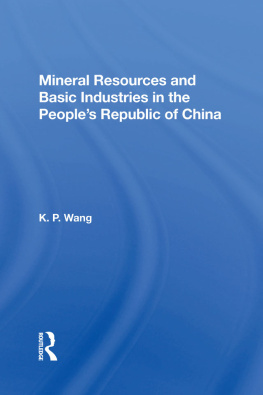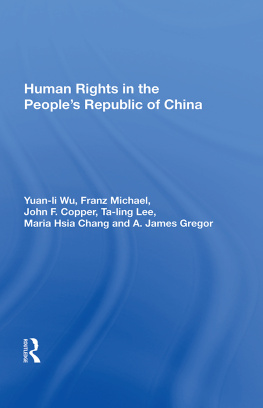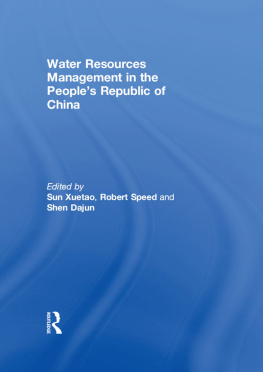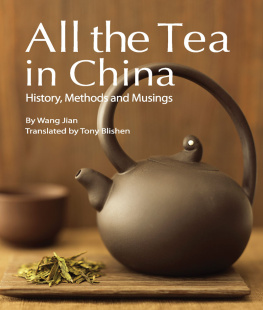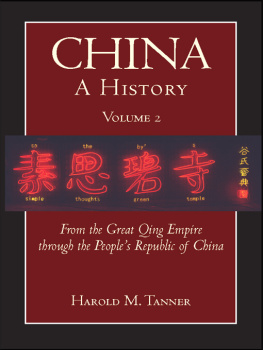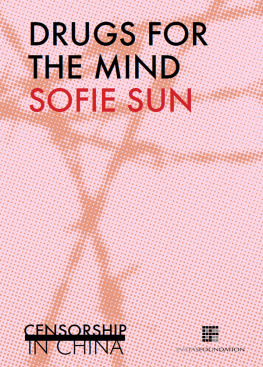Mineral Resources and Basic Industries in the People's Republic of China
Other Titles in This Series
Women in Changing Japan, edited by Joyce Lebra, Joy Paulson, and Elizabeth Powers
Cadres, Commanders, and Commissars: The Training of the Chinese Communist Leadership, 1920-45, Jane L. Price
The Problems and Prospects of American-East Asian Relations, edited by John Chay
The Chinese Military System, Harvey Nelsen
Westview Special Studies on China and East Asia
Mineral Resources and Basic Industries in the
People's Republic of China
. P. Wang
Mining and metallurgy have had a long history in China, and resources there have always been considered promising. More recently, in the People's Republic of China (PRC), a remarkable industrial renaissance is underway that should gain further momentum in the years ahead.
Rapid development of minerals has brought the PRC prominence not only in the area of industrialization, but also in world affairs. Chinese mineral developments, especially in petroleum, have been increasingly in the news. A very large coal industry is already in existence. The steel industry ranks fifth or sixth in the world. The PRC is also prominent in fertilizer, cement, and salt production, and its export metals are well known.
The need to know about Chinese mineral developments and the intense interest in them have prompted Dr. Wang's study. Emphasizing the world significance of Chinese minerals, he reviews the history of growth in the PRC's mineral industry and its present supply position; evaluates policy considerations and regional technical factors affecting mineral development; and assesses the PRC's mineral trade and its efforts to obtain equipment, supplies, and new technology. The major mineral sectors are discussed in detail, and the overall outlook is summarized.
. P. Wang, a supervisory physical scientist in the U.S. Bureau of Mines, is a specialist in international resources and mineral economics. Previously adjunct associate professor in mineral economics at Columbia University, Dr. Wang has also served on several occasions as a consultant to the United Nations in the areas of mineral economics and the application of science and technology in developing countries.
K. P. Wang
Mineral Resources and Basic Industries in the People's Republic of China
First published 1977 by Westview Press, Inc.
Published 2019 by Routledge
52 Vanderbilt Avenue, New York, NY 10017
2 Park Square, Milton Park, Abingdon, Oxon OX14 4RN
Routledge is an imprint of the Taylor & Francis Group, an informa business
Copyright 1977 Taylor & Francis
All rights reserved. No part of this book may be reprinted or reproduced or utilised in any form or by any electronic, mechanical, or other means, now known or hereafter invented, including photocopying and recording, or in any information storage or retrieval system, without permission in writing from the publishers.
Notice: Product or corporate names may be trademarks or registered trademarks, and are used only for identification and explanation without intent to infringe.
Library of Congress Cataloging in Publication Data
Wang, Kung-Ping, 1919
Mineral resources and basic industries in the People's Republic of China.
(Westview special studies on China and East Asia)
1. Mineral industriesChinna. 2. Mines and mineral resourcesChinna. 3. ChinnaIndustries. I. Title.
HD9506.C62W34 338.2'0951 76-29652
ISBN 13: 978-0-367-01766-8 (hbk)
Mineral developments in the People's Republic of China (PRC), especially in petroleum, have been increasingly in the news. Oil and gas have great potential, and a very large coal industry is already in existence. The steel industry ranks fifth or sixth in the world. The PRC is also prominent in fertilizers, cement, and salt, and its "export metals" are well known. Also, the country is buying heavily in nonferrous base metals. The need to know about Chinese mineral developments and the intense interest in them have prompted this study.
With no firsthand information and little in the way of literature reviews, it is difficult to specifically determine activity levels. However, because many PRC minerals are significant by world standards, considerable fragmentary data and evaluations are available through commercial circles, technical journals, international trade publications, Japanese sources, visitors, analysts, the general literature, and the press of the PRC itself. (Most of the photographs in this report come from PRC newspapers and periodicals like China Reconstructs and China Pictorial. ) And the situation becomes more clear when appraised by longtime observers of Chinese mineral developments who happen also to have a strong earth-science background.
An attempt has been made here to tell the mineral story of China in the best way possible. Accuracy of estimates varies with the individual industry, depending upon how much the subject has been officially reported, surveyed, or studied. Nonetheless, the magnitude of production levels seems clear. I would welcome all constructive suggestions on this report; in particular, any comments that PRC officials in the natural-resource field would care to make would be most welcome.
This book is adapted from, and essentially updates, my earlier report, The People's Republic of China: A New Industrial Power with a Strong Mineral Base, published by the U.S. Bureau of Mines late in 1975. Data are derived primarily from unconfirmed Chinese reports. Some estimates differ from those published by the Bureau of Mines because of subsequent appraisals; all estimates are subject to further revision as new information becomes available.
I wish to thank my wife, Rose, for the encouragement and quiet help she has given me in this work, and Dr. John D. Morgan, Jr., associate director of the U.S. Bureau of Mines, for his general guidance and careful review of the manuscript. Of course, any errors in the work are entirely my own.
Editor's note : Unless specifically identified otherwise, all tonnages in this report are in metric tons. It is recognized that Chinese place names may be spelled in several different fashionswith or without hyphens between syllables, with or without apostrophes to denote soft sounds. We have not chosen one system as superior to another, but have endeavored to spell individual names consistently throughout the text.
1
Introduction
A remarkable industrial renaissance is underway in the People's Republic of China (PRC). All indications are that this industrial progress will continue and possibly accelerate. The long history of mining and metallurgy in China and its extensive resources have been significant factors in bringing the PRC prominence not only in industrialization but also in world affairs.
Mining, smelting, and casting of copper, tin, and bronze can be traced back to more than a thousand years before Christ, and production of gold, silver, zinc, and brass followed somewhat thereafter. The making of iron and steel for implements and weapons probably started in China about 800 B.C. Historically, the Chinese learned something about lead smelting from the extraction of silver and about mercury metallurgy from the making of vermillion. T'ienk'ung K'ai-Wu, a Chinese technical book written in 1637 and published in English by the Pennsylvania State University Press in 1966, shows that mineral resources were widespread and mineral extraction technology at respectable levels in China in the seventeenth century. Mining and metallurgy were small in scale, however, even though the country had good mineral technologic foundations. Modern mining and smelting began at the turn of the twentieth century, but progress was minimal until the 1950s.


